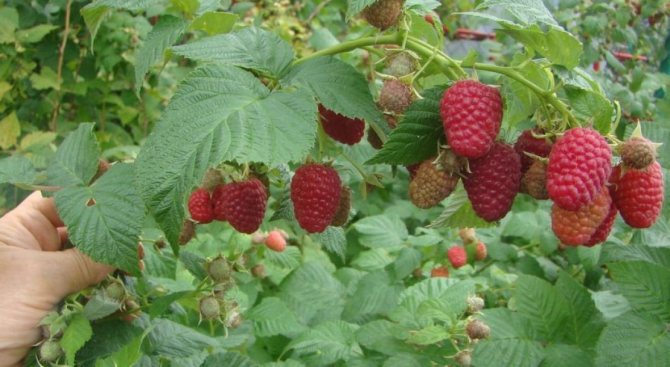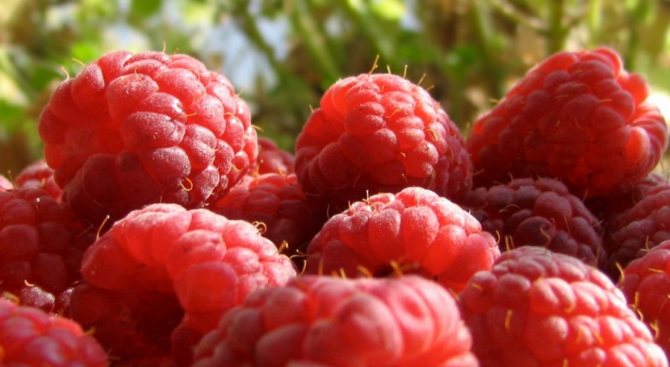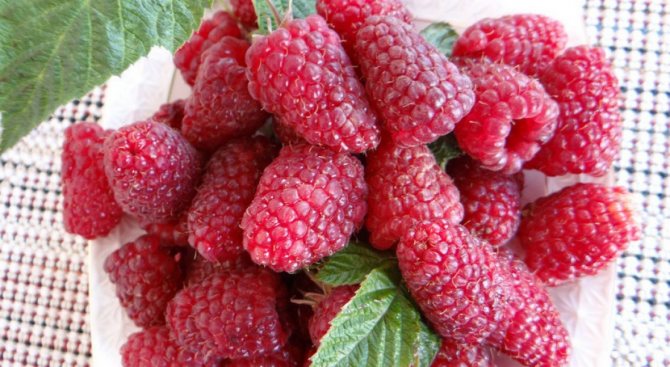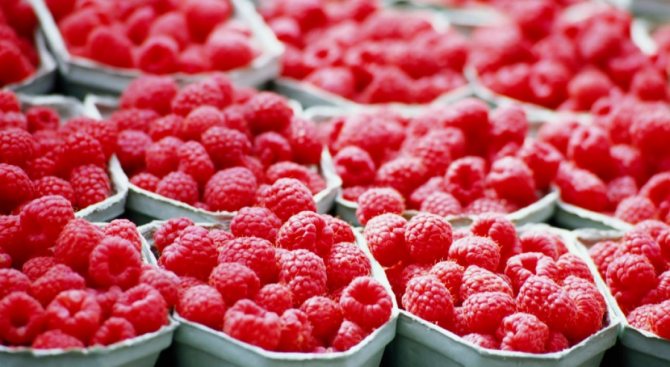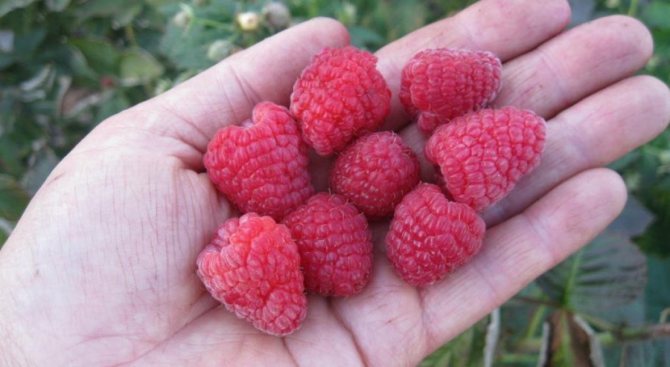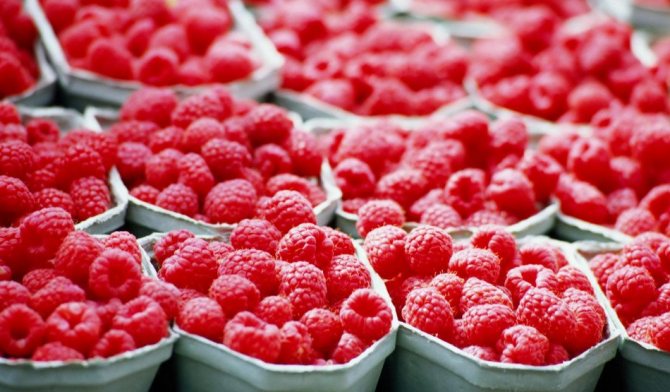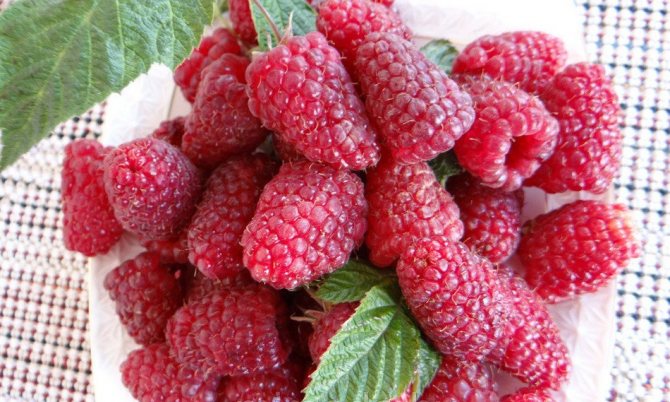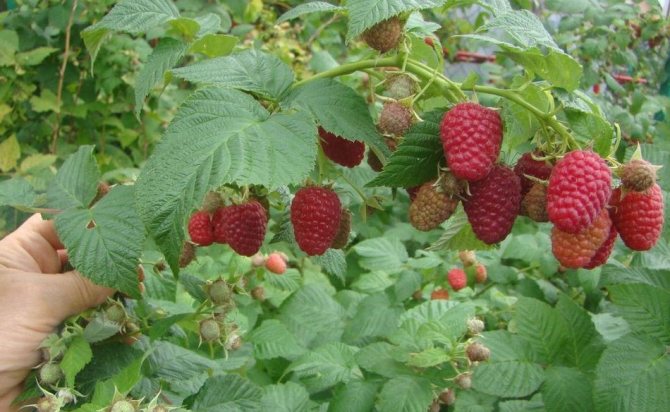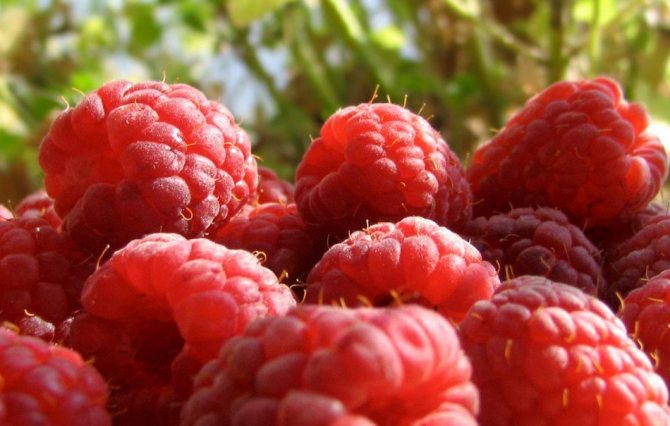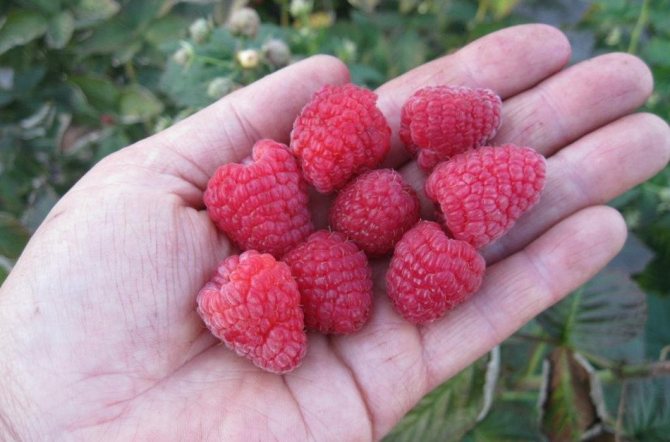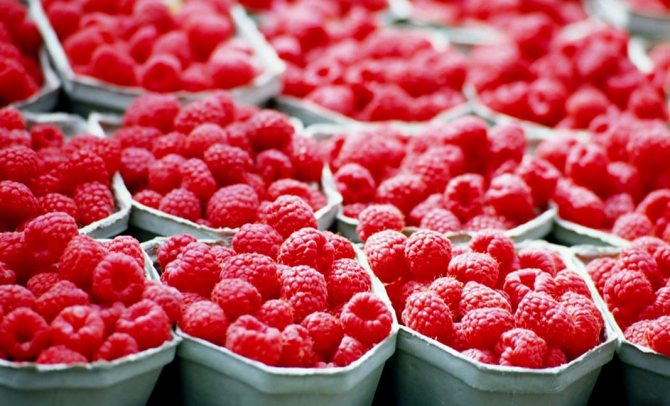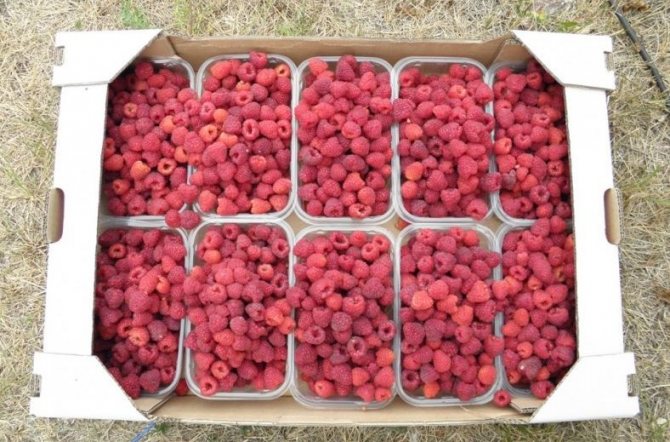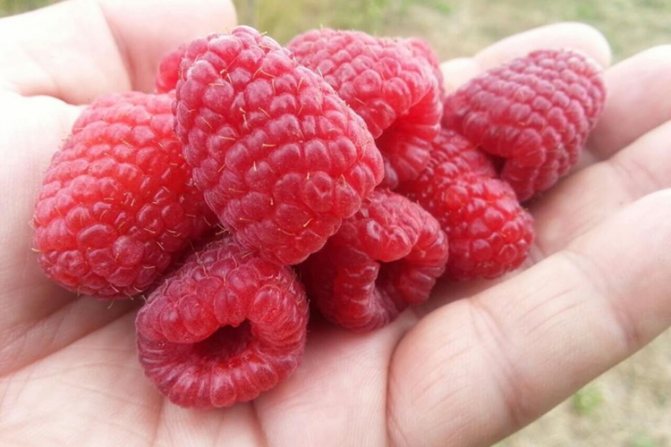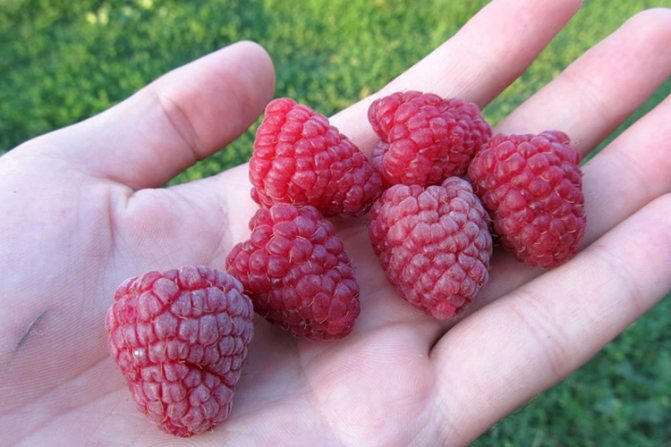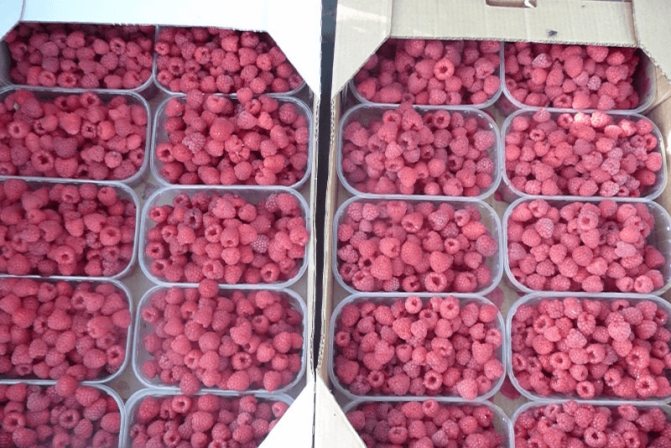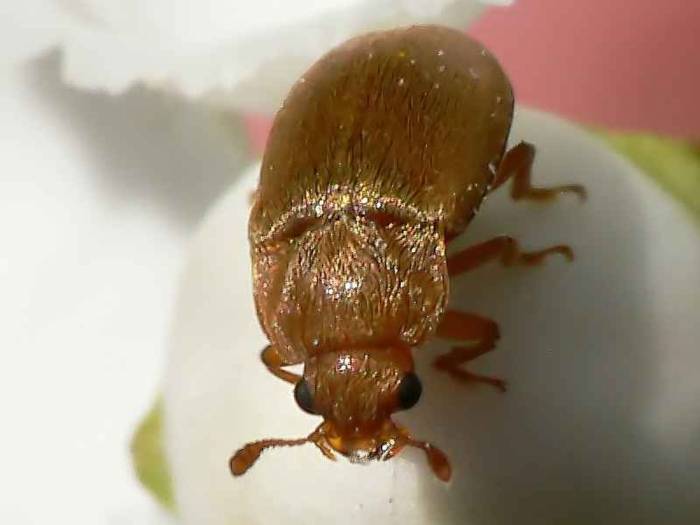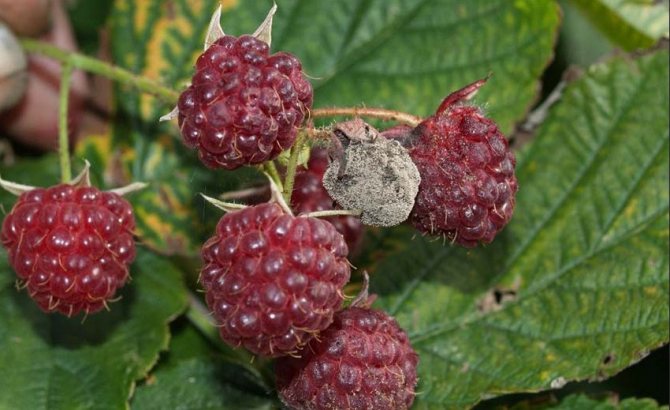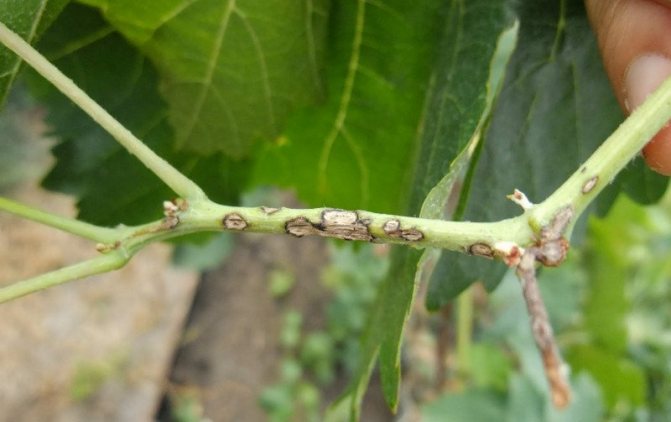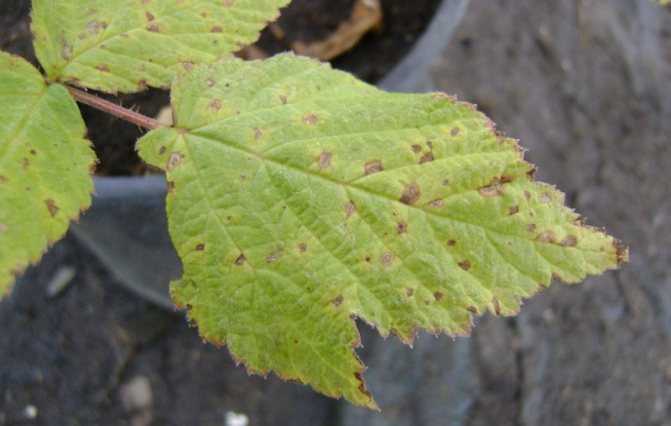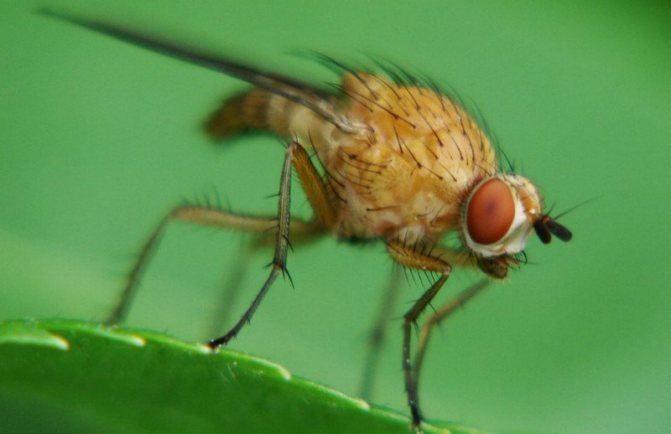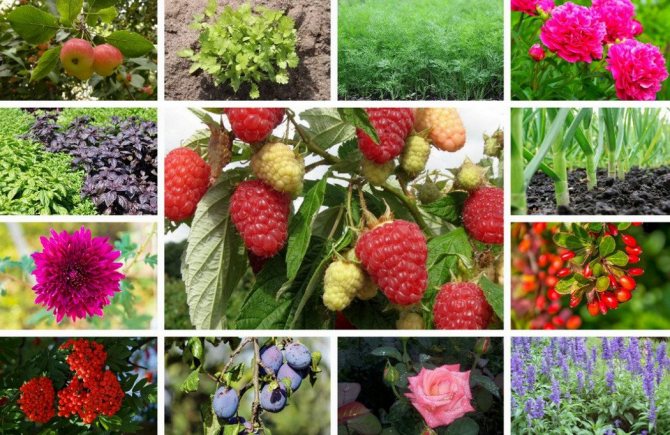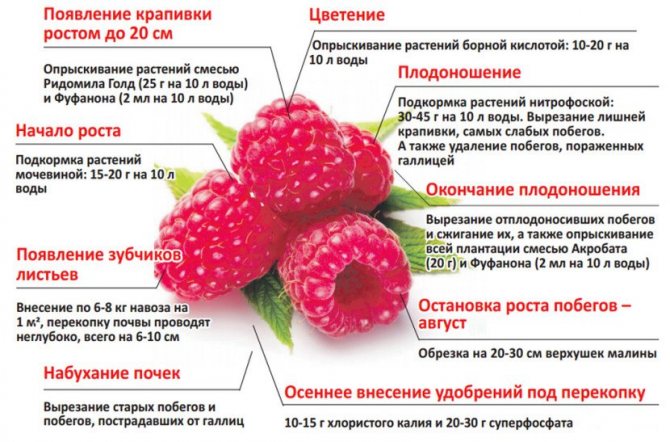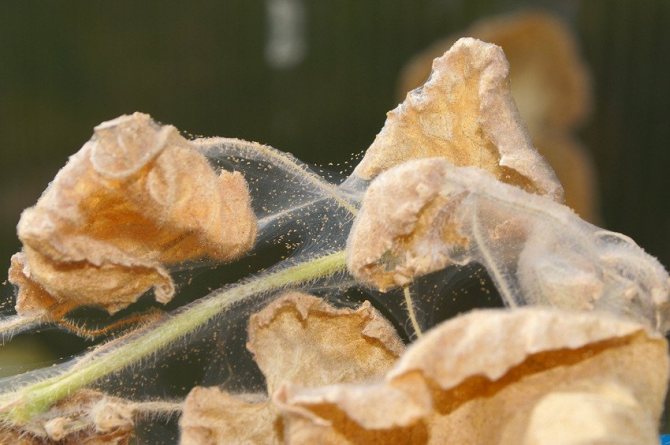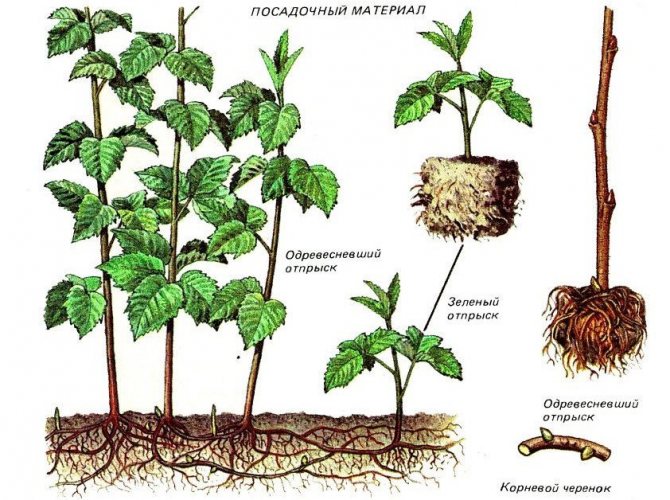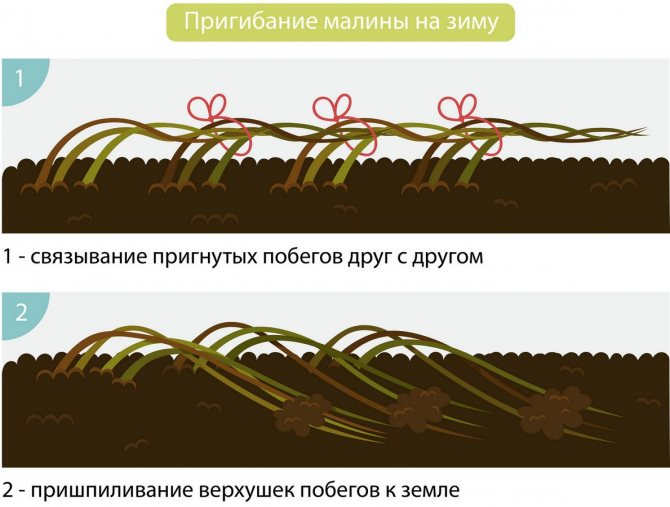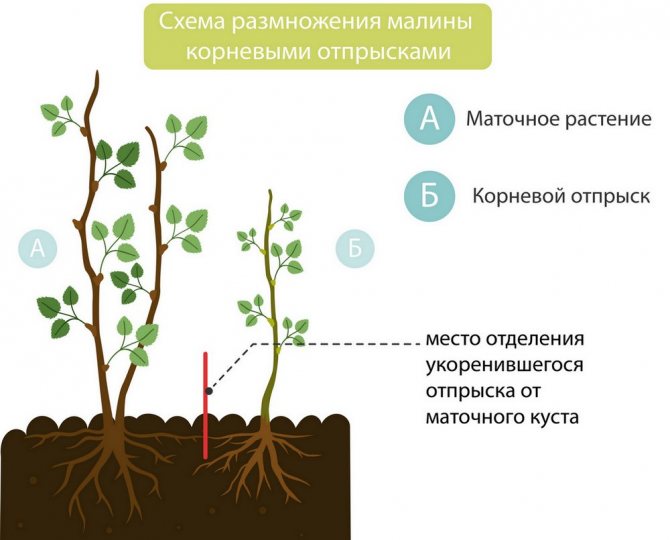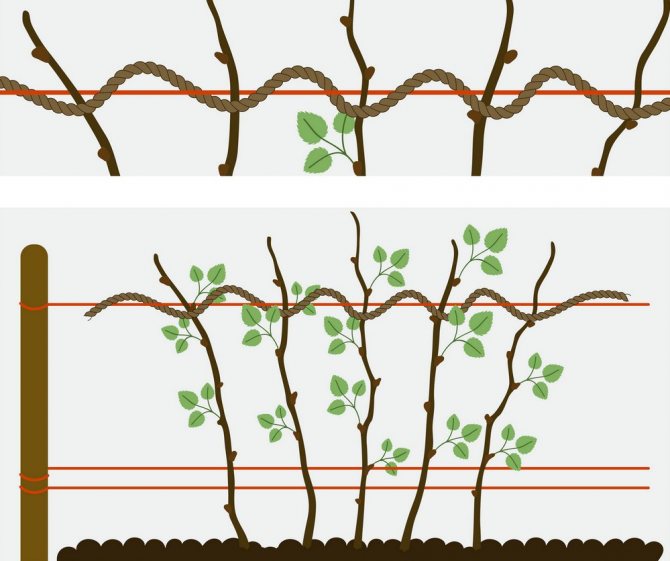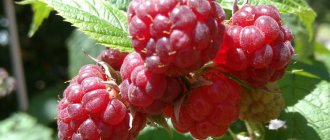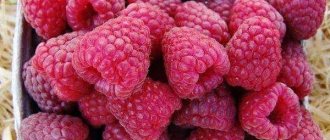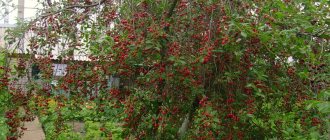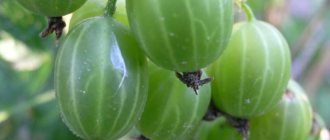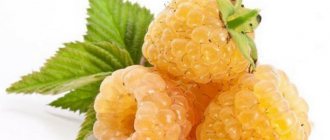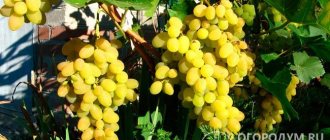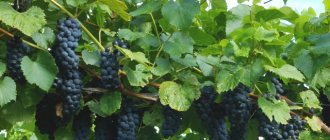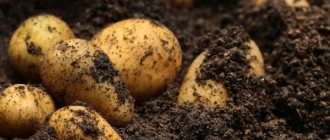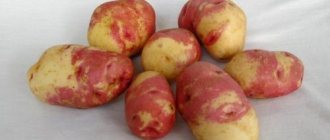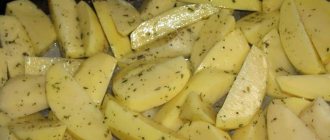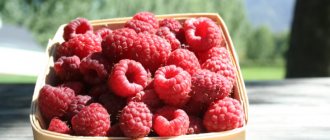In our family, raspberries are a favorite delicacy. Therefore, at my summer cottage, I allocated a large area for this culture. Among the various varieties, Brusvyana's raspberry takes pride of place. The variety has large, very juicy and tasty berries. The yield is very high, the care is minimal. I recommend this variety to anyone who is fond of growing raspberries or who wants to grow a high-yielding and tasty variety of this crop on their site.
In this article I will tell you in detail all the secrets of planting and caring for raspberries. I will select a photo, give a description of the variety, provide feedback from gardeners who have been growing Brusvyana for a long time.
Description of the variety
The first fruiting of raspberries begins in mid-June and lasts until the first frost begins. Even before the beginning of November, the leaves of the variety do not turn yellow and do not fall off.
The leaves of the culture have a dark green tint. They are large, wrinkled.
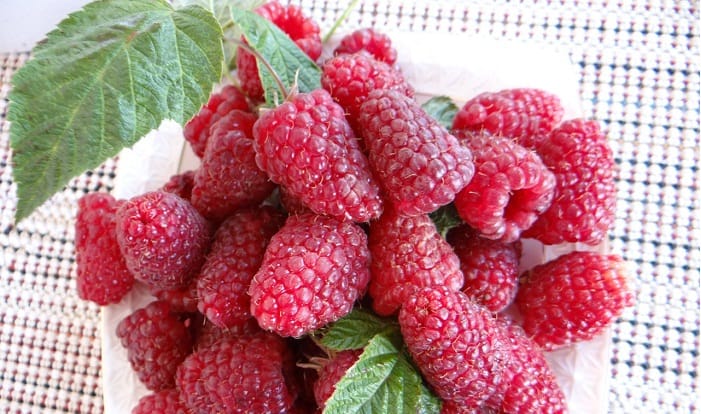
The variety has powerful bushes, the height of which varies within 180 cm. Raspberries have erect, thick shoots with few thorns. During fruiting, the crop is produced mainly by the most developed stems. Each season, the crop will grow up to 8 additional shoots.
The berries of the variety have a rich red hue. They are very juicy, aromatic and sweet. There is a slight sourness, which further enhances the taste characteristics of Brusvyana.
The seeds are small, the drupe is dense. Due to this, the berries, even at maximum ripening, do not deteriorate, do not wrinkle and do not lose their original appearance. Raspberries tolerate transportation well.
The shape of the fruit is conical. The mass of one berry is approximately 8 grams. When harvesting subsequent crops in one season, the fruits grow smaller: up to 6 grams.
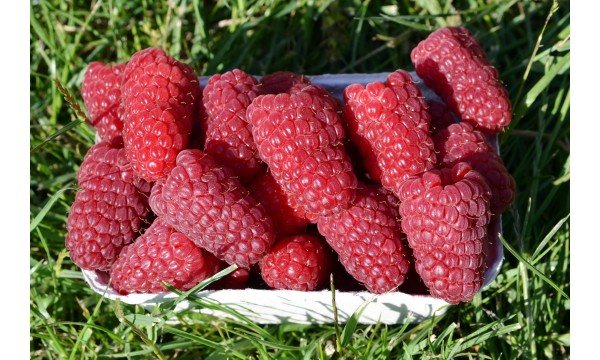

The raspberry variety is large, has an attractive appearance, so it is often grown by farmers for sale.
Dignity
In Brusvyan's raspberry, breeders reveal the following positive properties:
- the high yield of the variety allows you to harvest up to 8 kg of the crop per season from one bush;
- the variety has excellent taste characteristics;
- raspberries have an attractive presentation;
- it tolerates transportation well;
- long fruiting period allows harvesting before the first autumn frosts;
- the culture requires minimal care;
- the variety is resistant to low temperatures and adverse weather conditions;
- raspberries have increased immunity to various diseases.
Reliable characteristics
The Brusvyana raspberry variety was developed by breeder Dmitriev from Ukraine, and was officially entered into the state register back in 2008. This remontant raspberry was intended for commercial cultivation and for private gardening as a dessert variety. The efficiency of industrial cultivation of Brusvyan's raspberries has not yet been proven, but the quality of the variety is quite sufficient for such a scale.
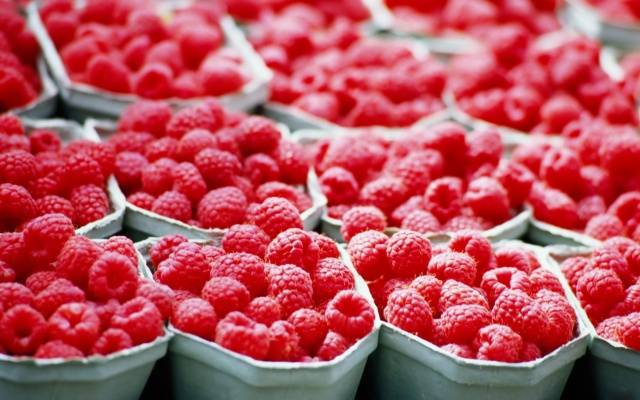

Characteristics of Brusvyan's raspberry:
Read also: Signs of the appearance and treatment of alternariosis of grapes
Advantages and disadvantages
Brusvyana's characteristics are really remarkable - this raspberry will "plug in the belt" many foreign varieties and species. But is everything really so smooth, you need to figure it out in more detail.
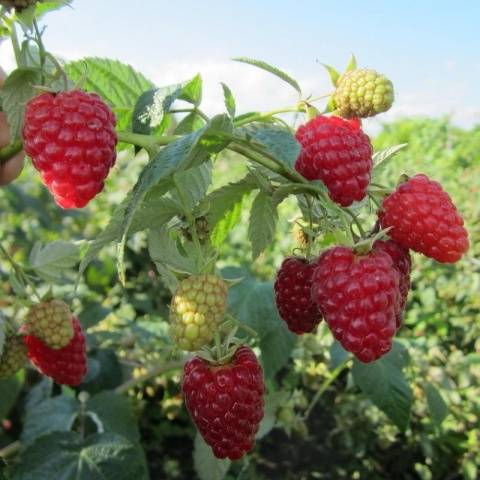

So, the indisputable advantages of the Brusvyan variety are:
- The quality of mature products: raspberries are beautiful, large, very tasty and aromatic.
- Despite the size of the fruits and their number on the shoots, the thick branches of the bush can withstand the mass of the crop, without bending or breaking off.
- High yield, which can be significantly increased by proper agricultural technology.
- Heat resistance, allowing the berries to keep their presentation and taste even in extreme heat (raspberries are not "baked").
- Unpretentiousness and frost resistance, which greatly facilitate the work of the farmer.
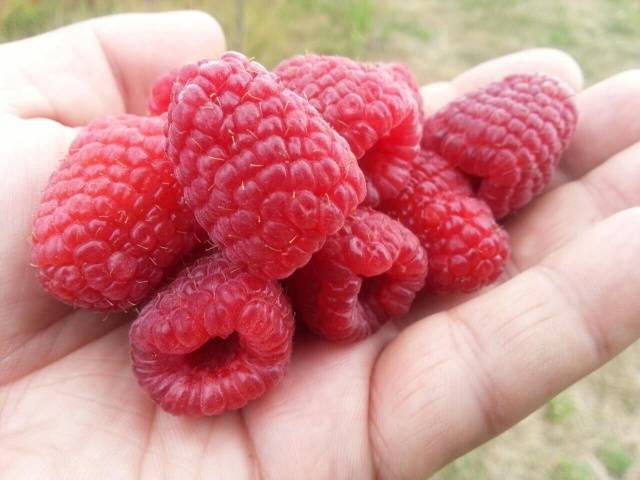

The description of the variety will be complete if we mention not only the pros, but also the cons of remontant raspberries. Brusvyana, like any raspberry, has drawbacks, but they are not critical:
As practice shows, sufficient agricultural technology is capable of leveling all the disadvantages of the variety. Even experienced gardeners note a large number of seedlings of fake Brusvyana, which can affect the number of negative reviews about this variety.
Growing features
In order for the berries to be large and tasty, and the harvest to be large, it is important to carry out the following activities.
Seat selection
To grow a large yield of large and sweet berries, it is recommended to choose a sunny place for planting the crop. The bed should be protected from the wind, and the soil should be loose and nutritious.
Landing
Raspberries can be planted in October or spring in April. The seedlings must have a good root system, without rot and mechanical damage. The planting material must have a height of at least 20 cm. Do not plant the crop densely. The distance between each shoot should be at least one meter. If raspberries are planted in several rows, the distance between them should be about 2 meters.
Before planting, the soil is carefully dug up and loosened. In the ground, holes are made up to 45-50 cm deep. Organic matter is introduced into each hole: manure, peat, humus. You can use superphosphate and potash fertilizers.
A shoot is installed in the hole so that the root collar remains above the ground. Saplings are buried in, the soil is compacted and irrigated.
Planting seedlings on the site
Choosing a healthy seedling of a promising remontant variety and preparing the right site for planting is only half of the guaranteed success in growing raspberries. Of particular importance is the direct process of rooting bushes, as well as its timing.
Most gardeners consider the period starting from the second decade of April to be the ideal time for planting raspberry bushes. Then it is already warm enough outside, and the earth warmed up to a stable + 15 ° С. In such conditions, the risks of developing root rot and fungal infections are low. But along with the positive aspects, the possibility of drying out of the root system is noted.
In cramped berry fields, even the most productive variety will not please with abundant fruiting. For full development, the bushes need space. That is why experts do not advise thickening the planting. The optimal distance between Brusvyana plants is within 70-100 cm with trench technology for growing raspberries and 1.5 m with bush.
Do not skimp on the aisles, because the variety is considered tall with abundant growth and powerful shoots. In cramped quarters, first of all, it’s hard to work in the berry. And, secondly, the branches, to the extent of their development, will create shadows for each other, hindering development.
It is recommended for amateur gardeners to plant raspberry bushes, leaving up to 1 m between plants and up to 2 m between rows. On a hundred square meters of area, this scheme allows you to place about 90 seedlings.
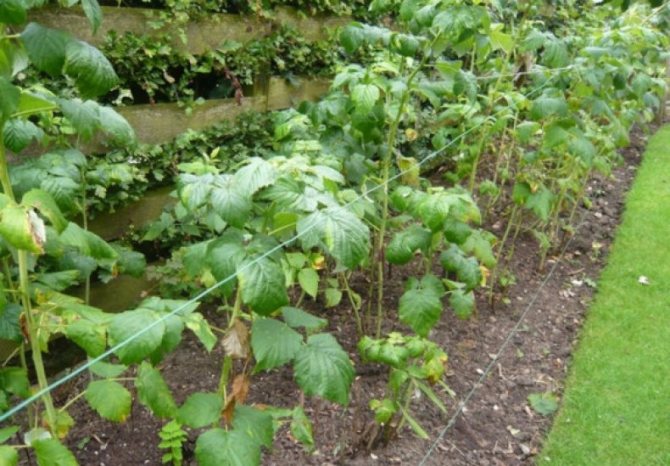

Further care
Correct implementation of agrotechnical measures will allow you to grow a bountiful harvest of berries. For this, the following activities are carried out:
Watering
Brusvyana loves moisture, so the bushes must be watered once every 10 days and very abundantly.The soil under the plants should be soaked to a depth of 40 cm. During flowering and fruiting, watering is carried out more often. If the weather is sunny and hot, humidification is carried out up to 2 times a week.
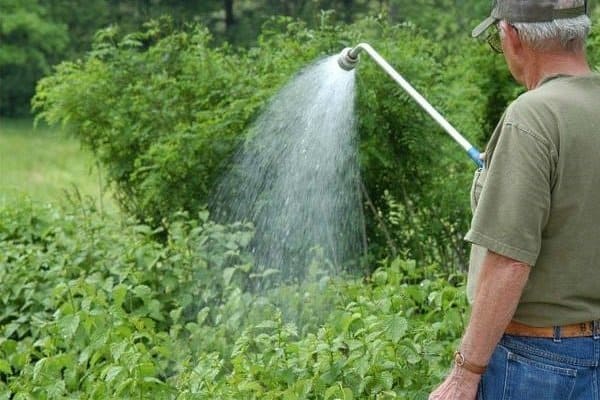

Up to 30 liters of liquid is poured under each bush.
Pruning bushes
It is recommended to prune raspberries in early spring, before sap flow begins. All last year's shoots must be shortened by 10-15 cm. Old, diseased and dry shoots are also removed. They are shortened at the root. In the future, they will no longer yield crops, but will only take all the nutrients from the young growth.
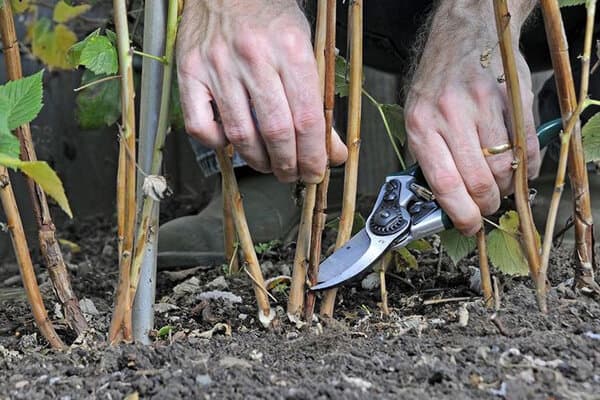

The tops of raspberries are not pinched. Otherwise, the yield of the variety will decrease and the berries will begin to ripen several weeks later than usual.
Shrub pruning can also be done in the fall. In this case, all bushes are cut at the root. If you plan to grow the variety for no more than 2-3 years, you can trim the tops of the shoots that bore fruit this season. In this case, next year a lot of young growth will appear, which will actively bear fruit in a year.
Top dressing
The raspberry is fed in the fall after the bushes are cut. It is recommended to use organic fertilizers to which the crop responds best. This can be compost, humus, manure or a solution of wood ash, a liter of which is diluted in advance in a bucket of water. You can also use a complex of mineral fertilizers.
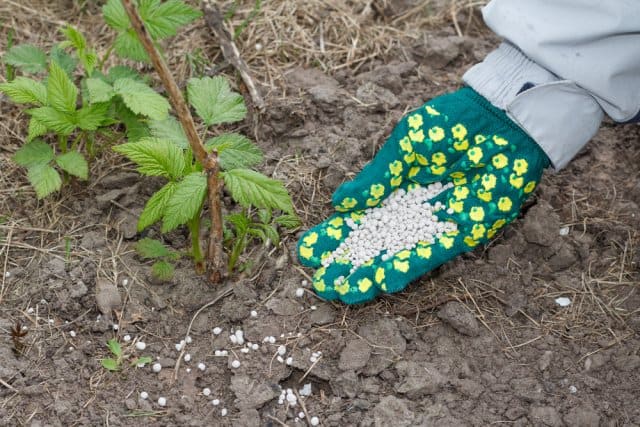

Top dressing begins in the second year of plant life.
Diseases and pests
Brusvyana is quite resistant to diseases. However, experienced gardeners say that sometimes the variety is still susceptible to disease. This happens when remontant and common raspberries grow side by side, and insects move to neighboring bushes.
Important! It is not recommended to plant different types of raspberries in the same area. If this is not possible, then a large distance should be maintained between the bushes.
Prevention and control of the main diseases of raspberries (table)
| Period | Drugs | Way to fight | |
| Chemical methods | |||
| Anthracnose | early spring |
| spraying |
| before flowering | 1% Bordeaux liquid or Topaz preparation (according to the instructions) | spraying | |
| after harvest | |||
| Purple, white, ulcerative spot | early spring | 2% nitrafen solution | spraying |
| before flowering | 1% bordeaux liquid | ||
| after harvest | |||
| Biological methods | |||
| Different types of rot | beginning of vegetation | Polyversum BP (according to the instructions) | spraying |
| ripening of fruits | |||
| Prophylaxis | |||
| |||
Major diseases
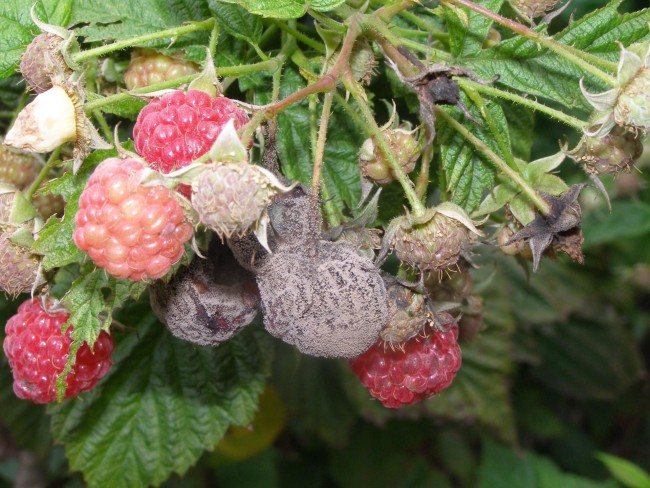

Gray rot is a widespread dangerous fungal disease of raspberries


With white spot, brownish spots up to 3 mm appear on the leaves
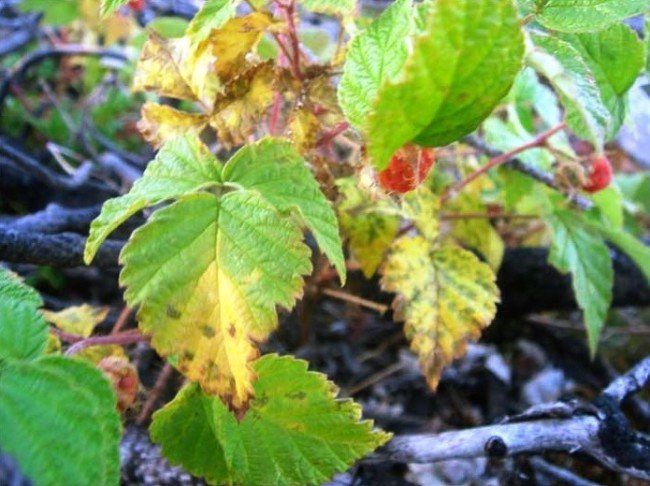

Anthracnose appears as single spots of a grayish-white hue with a purple border on the raspberry stem
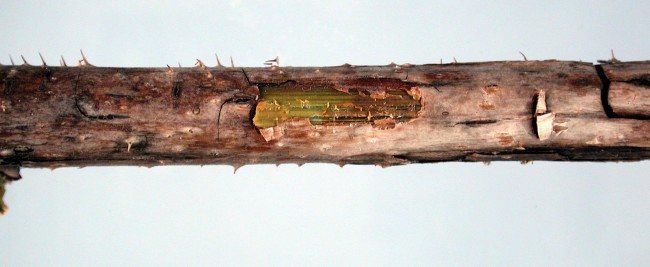

With ulcerative spotting, brown spots of a blurred shape grow along their length on the affected stems
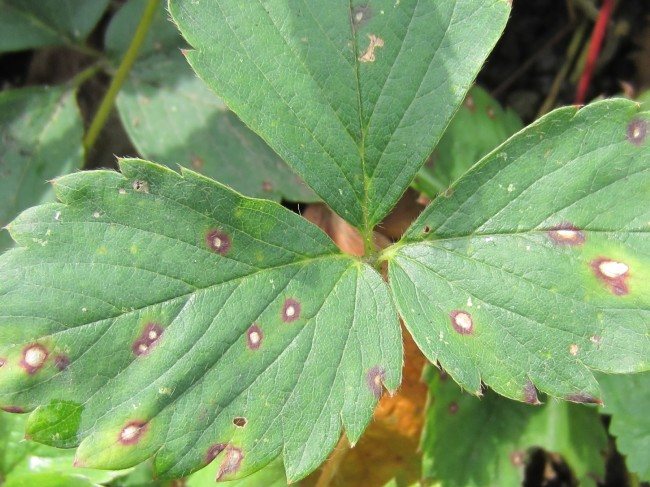

Purple spot disease is spread by fungal spores
Fight against the main pests of raspberries (table)
| Period / time | Preparations / method of struggle | Prophylaxis | |
| Raspberry beetle | morning hours | shaking off beetles from bushes on a light cloth |
|
| bud formation (in the evening) | spraying with tansy infusion. For 5 liters of water: 350 g of dried and 1 kg of fresh tansy. Boil for 30 minutes, strain, dilute with cold water to 10 liters. | ||
| Raspberry fly | before the flowers appear |
| |
| Spider mite | before flowering and after picking berries | Fufanon, Confidor, Iskra - according to the instructions | |
| Strawberry-raspberry weevil |
Important! If pests are found in the raspberry, it is recommended to immediately trim the raspberries at the root and burn all affected shoots.
Major pests
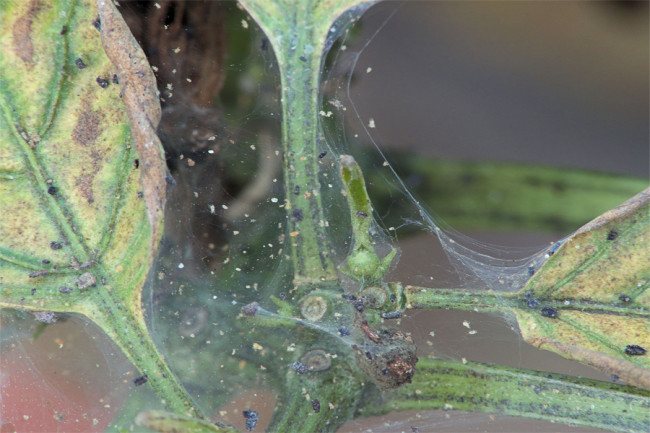

Spider mite is a tiny pest whose web can be seen from the underside of raspberry leaves
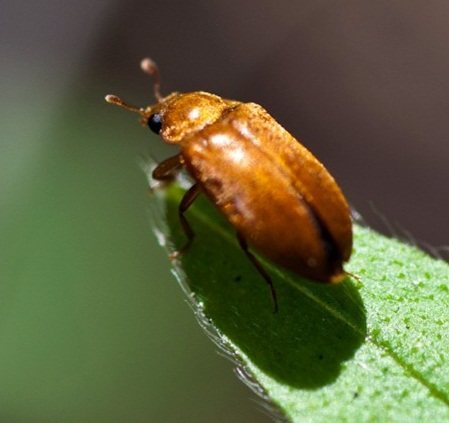

The raspberry beetle eats the buds, leaves and flowers of raspberries
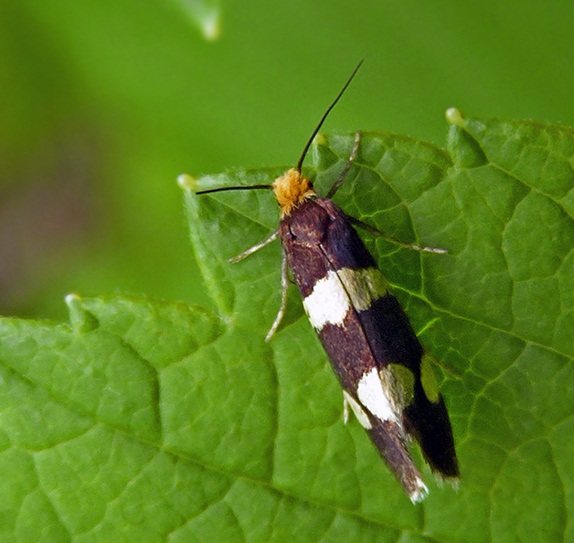

Raspberry fly is a small brownish-gray insect up to 7 mm long
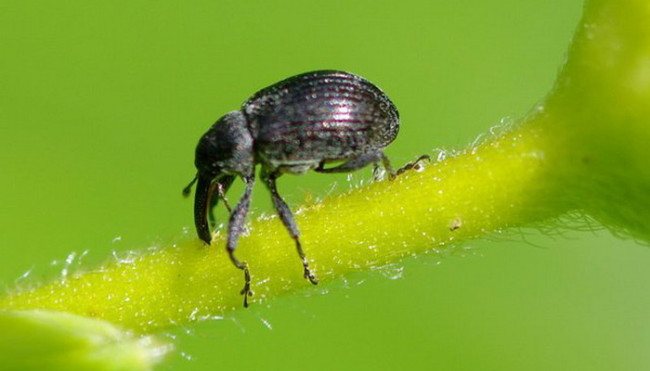

Strawberry-raspberry weevils lay their eggs inside the buds, while gnawing at the pedicels
Testimonials
Pavel
When I saw Brusvyana from my neighbor in the country, I asked him for a couple of shoots for planting. The raspberries are just wonderful. During the season, I collect the harvest in buckets. The berries are large, juicy, but at the same time they do not choke or deform after harvesting. Their taste is simply wonderful: sweet, with a raspberry aroma, but at the same time with a slight sourness. I harvest from June to November. Delicious jam is made from raspberries. When boiled, the fruits are not boiled, but retain their integrity. Berries are great for freezing. Also, the variety is satisfied with minimal care.
Natalia
I really love the Brusvyana variety. Raspberries will grow just gorgeous. The berries are large, juicy and very tasty. All the bushes are hung with them. The yield is so high that a couple of bushes are enough for me to make jam, freeze berries and eat them fresh all summer. The variety has very good taste. The berries are sweet, with a slight sourness. A breathtaking raspberry aroma emanates from them.
Choosing the right place
Many novice gardeners mistakenly perceive remontant raspberry varieties as super-hardy and do not give Brusvyany the necessary attention in planting and care. As a result, they get a bad harvest or dead cuttings. In order not to waste money and time on planting a berry plant, do not be too lazy to find the right site for it. In this case, special attention should be paid to lighting and soil features. Let's figure it out in order.
Read also: Useful and healing properties of apricot
For a hybrid, it is important that the soil has nutrients and good drainage. Consequently, an ideal option for planting raspberries would be an area characterized by light fertile substrates with neutral acidity. If there is no such site in your garden, experts advise making adjustments to the soil by introducing the missing elements and known alkalization.
Output
Brusvyana's variety is young, but at the same time it is becoming more and more popular with gardeners every year. Raspberry lovers are attracted by unpretentiousness in crop care, very high yield and excellent fruit taste. With the right agricultural technology, the culture will never disappoint with its high yield. The main thing is to follow these recommendations:
- follow the crop planting scheme;
- watering it;
- feed the bushes;
- properly prepare raspberries for wintering.
About the origin of raspberry Brusnyava
The raspberry got its name from the Brusvyan berry nursery, which is located in the Zhytomyr region. The author of the variety is V. Dmitriev.
This breeder began breeding this remontant raspberry in 1993. It was possible to obtain the variety by crossing the Polish raspberry Porana dew and domestic varieties of culture. Over the next 15 years, the author managed to make the new raspberry almost perfect.
Today Brusnyava is grown not only in the gardens of Ukraine. Also, raspberries are cultivated in central Russia, Belarus, Kazakhstan and other countries.
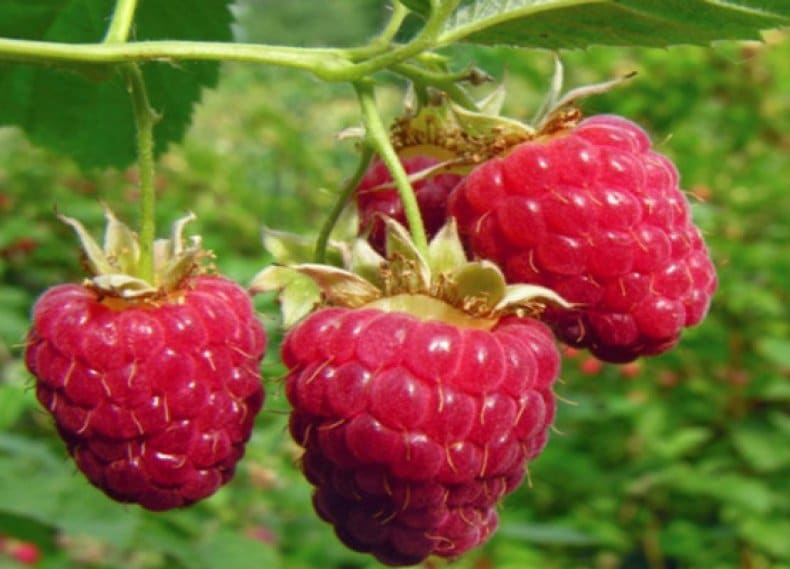

Raspberries have tasty and healthy fruits

